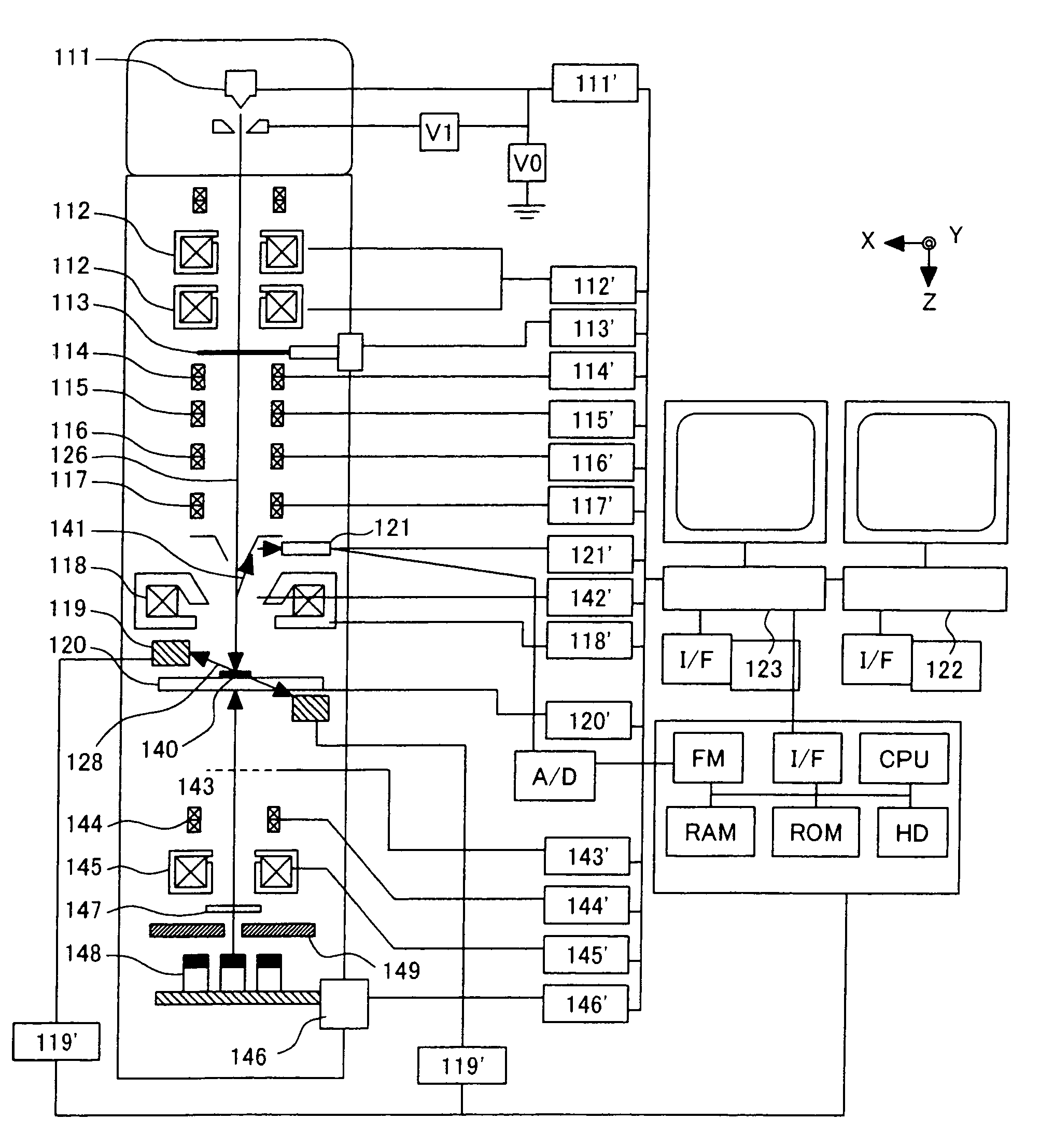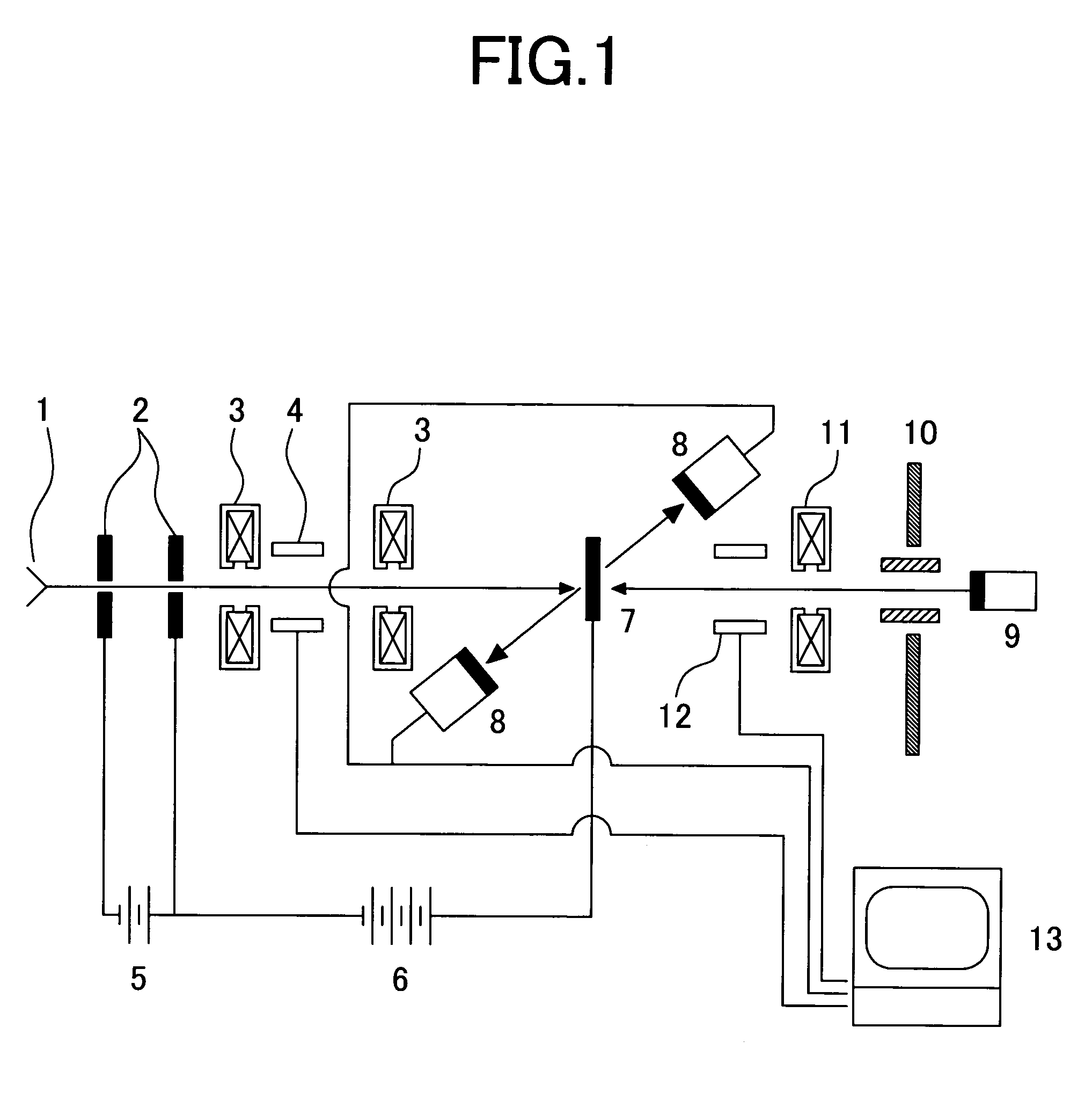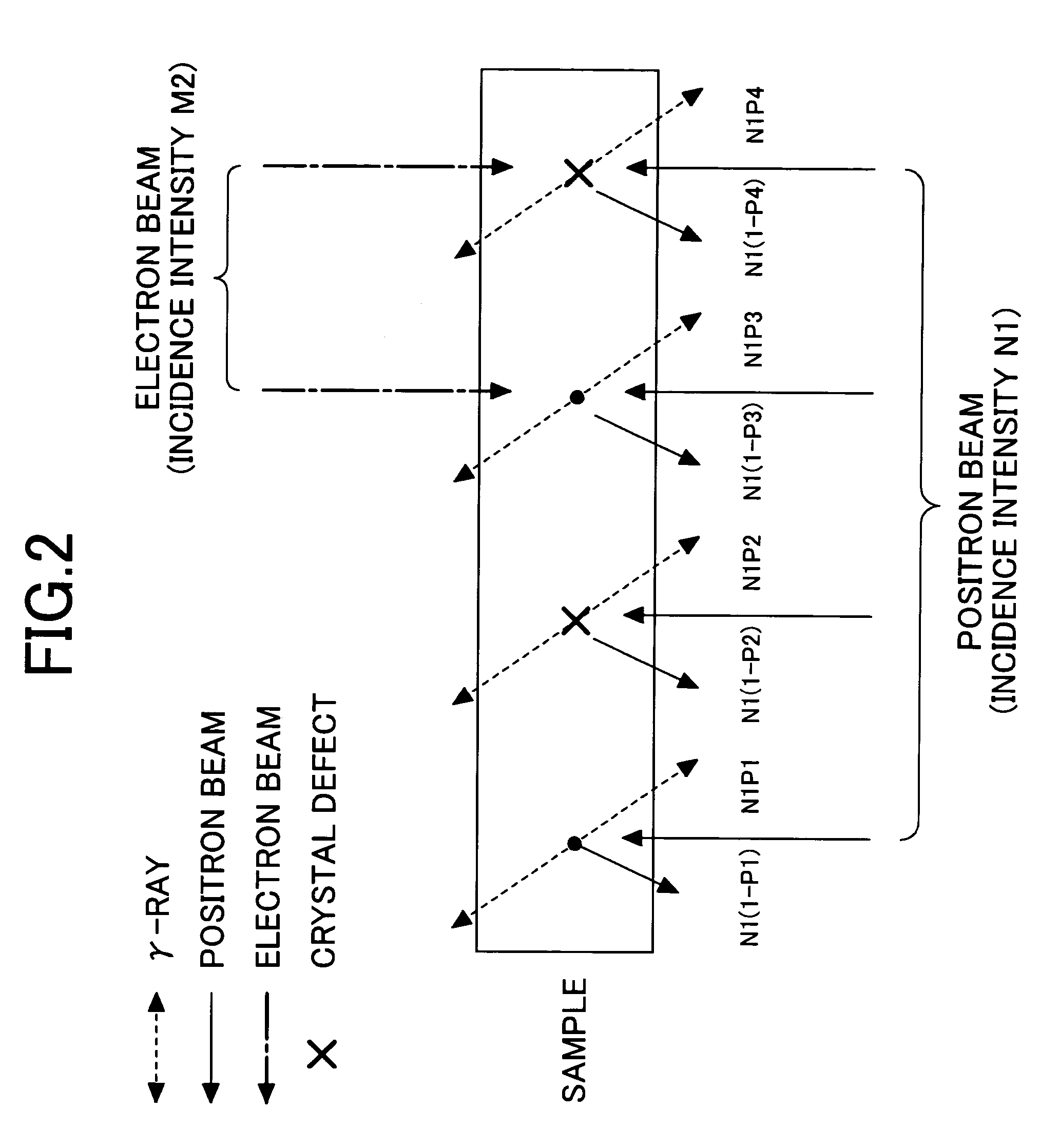Defect inspection instrument and positron beam apparatus
a technology of positron beam and inspection instrument, which is applied in the direction of instruments, material analysis using wave/particle radiation, nuclear engineering, etc., can solve the problems of low generating efficiency of monochromatic positron, low detection accuracy, and low probability of being trapped by an atom on the sample surface. achieve sufficient resolution, and reduce the intensity of positron beam
- Summary
- Abstract
- Description
- Claims
- Application Information
AI Technical Summary
Benefits of technology
Problems solved by technology
Method used
Image
Examples
first embodiment
[0026]First, the principle of a defect number measurement method is described using FIG. 2. In this figure, four cases are described. That is, it means four kinds of combinations of samples, with or without defects, and injection of only electron beams or both electron and positron beams onto the sample. Positrons injected into the sample lose energy in the sample by repeated inelastic scattering. The low-energy positrons pair-annihilate with electrons in the sample. It means that they disappear radiating usually two streams of 511 keV γ-rays. Additionally, there are positrons, not pair-annihilated, which are re-emitted outside the sample. Herein, when the electron intensity injected into a sample is N1 and the probability of pair annihilation with an electron is p1 (0P1, C1>1. A method described in the prior art uses a method, wherein this ratio c1 is principally detected as a contrast.
[0027]On the other hand, considering the case when both positrons and electrons are simultaneousl...
second embodiment
[0042]FIG. 4 shows the second example. The point irradiating the positron beam from the right side of the sample and the converging electron beam from the left side of the sample is similar to the first example of FIG. 1. In this example, to maintain convergence by as low acceleration as possible, a deceleration mesh 18, that decelerates the accelerating electron beam immediately before the sample, was installed. A decelerating voltage 19 of opposite sign to the extraction voltage 5 and accelerating voltage 6 was applied on this deceleration mesh. It is necessary that the sample be at a low enough energy to generate the pair annihilation with the positron. Moreover, in order to suppress incident electron beam spreading by scattering inside the sample it is effective to make an electron beam with low energy. Rather than convergence by means of an electromagnetic coil 3 at a low accelerating voltage, convergence is maintained by deceleration after adequately established at high accele...
third embodiment
[0044]In a semiconductor device in recent years, the probability of creating a micro-defect, which is invisible with the prior art, in a substrate or circuit pattern formed on a substrate, is increasing because of introducing new structures such as adoption of an SOI (Silicon on insulator) wafer containing an oxide film layer inside. Because such micro-defects cause a junction current leakage, evaluation of point defects and micro-defects in the crystal (presence, density and position identification etc.) becomes more important. For example, image contrast cannot be observed by a Transmission Electron Microscope (TEM) if the defect does not exist in a ratio greater than or equal to unity for five nascent atomic rows. That is, it was necessary to make the sample thickness less than 1 nm and to condense several defects, otherwise evaluation of the above-mentioned point defects in a solid material or cluster defects consisting of two or more defects were difficult using a conventional ...
PUM
| Property | Measurement | Unit |
|---|---|---|
| energy | aaaaa | aaaaa |
| length | aaaaa | aaaaa |
| acceleration voltage | aaaaa | aaaaa |
Abstract
Description
Claims
Application Information
 Login to View More
Login to View More - R&D
- Intellectual Property
- Life Sciences
- Materials
- Tech Scout
- Unparalleled Data Quality
- Higher Quality Content
- 60% Fewer Hallucinations
Browse by: Latest US Patents, China's latest patents, Technical Efficacy Thesaurus, Application Domain, Technology Topic, Popular Technical Reports.
© 2025 PatSnap. All rights reserved.Legal|Privacy policy|Modern Slavery Act Transparency Statement|Sitemap|About US| Contact US: help@patsnap.com



